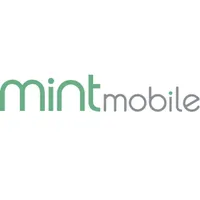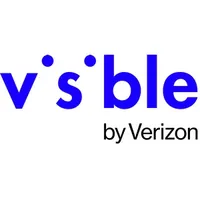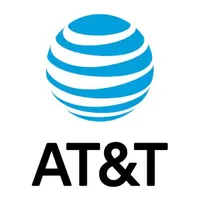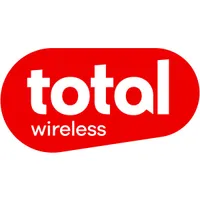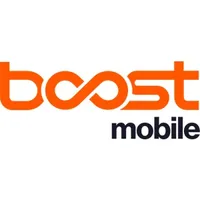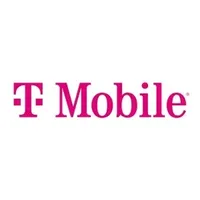Best cell phone plans in 2025: the best options for your monthly phone service
The best cell phone plans for families and individuals — from unlimited data to low-cost options

Best cell phone plans TL;DR
If you're looking for the best cell phone plan overall, turn to Mint Mobile and its affordable 5GB plan with service via T-Mobile's reliable network. For the data-lovers, you can opt for Visible's unlimited data plan. And if you want to get a whole household on a plan, AT&T is your best bet.
I've spent a decade at Tom's Guide reviewing what the best phone carriers charge for their phone service so I know what your options are — and which ones stand out from the crowd. My trick to finding great plans? Look beyond the big names like AT&T, T-Mobile and Verizon, and turn to some off-the-beaten path choices for options.
Ultimately, the question I ask myself when picking cell phone plans is how much data am I getting for my monthly payment. I also weigh network performance along with the perks that come with a plan when I'm sorting through various options.
Right now, I like the 5GB plan at Mint Mobile for people who don't need a lot of data and a new unlimited data plan at Visible for those who do. And because there's no one-size-fits-all answer to find the best cell phone plan, I also highlight other options from Verizon, AT&T, and elsewhere that might fit in better with your budget.

I've been working for Tom's Guide since 2015, where I'm now the managing editor for mobile coverage. If it's about phones or cell phone plans, I'm on the case. I've been looking at phones since the debut of the iPhone back in 2007, as my career in technology coverage dates back to 1999. From my Northern California home, I'm constantly checking in on phone carriers to see what they charge for data and how that compares to other options. When I'm not doing that, I'm cooking, traveling, and staring at a phone screen.
The best cell phone plan overall
Mint Mobile | 5GB | $15/month - Best cell phone plan overall
Most of us don't need a limitless pool of data for our monthly cell phone use, which makes Mint's 5GB plan a perfect fit. Even better, you'll pay a very low rate of $15/month for that data at Mint, though it will require a long-term commitment to the T-Mobile-owned carrier.
Mint offers new customers a low introductory rate for the first three months of service — $15/month in the case of the 5GB plan. To keep that rate in place after the three months are up, though, you need to pay for a full year of service. That's $180, which can be a big expense for some people. If you can swing it, though, you've locked in a low rate for the next 12 months, with service coming from T-Mobile's reliable and far-reaching network. Even if you go over your data limit, Mint merely slows down your data speeds for the rest of the month; it doesn't charge you an overage fee.
Mint has other plans with more data — a $20/month 15GB option, another one for $25/month with 20GB of data and a $30/month unlimited data plan — that follow the same pattern of a low introductory rate for three months, followed by a year-long commitment to keep that best rate. Those three options compare well to what other carriers charge, should you need more than Mint's 5GB plan.
Between the generous introductory rate and the low monthly cost, Mint provides a pretty compelling option for anyone who can swing that annual payment. People who prefer month-to-month payments will need to look elsewhere, though.
Network provider: T-Mobile
When you hit your data limit: Data slowed to 128 Kbps
Plan perks: Mobile hotspot data, free calling to Canada and Mexico
Pros: Low monthly rates; Three different data plans available
Cons: Best rate requires big upfront payment
The best unlimited data plan
Visible Plus | Unlimited data | $35/month - Best unlimited data plan
Visible offers three cell phone plans, each of which delivers unlimited data courtesy of Verizon's network. (Verizon owns Visible.) You can opt for Visible's cheapest plan at $25/month for a bare-bones offering or get multiple perks for international calling with the $45/month Visible Plus Pro plan. But I think the $35/month Visible Plus plan is just right for most people.
Like Visible Plus Pro, the Visible Plus plan gives you access to 5G service on Verizon's super-fast Ultra Wideband network, where available. (The standard Visible plan includes 5G, but on the slower nationwide network.) You get 50GB of high-speed data with Visible Plus, and you can use your phone as a hotspot with high-speed data. Additional perks include the ability to use your plan when traveling in Mexico and Canada and one Global Pass day per month that covers international travel.
Visible Plus Pro gets some better perks, including the ability to call 85-plus countries and text 200-plus, along with two Global Passes and the ability to connect a smartwatch. (Smartwatches cost $10/month on Visible's other plans.) But regardless of which Visible plan you pick, taxes and fees are baked into the price, so you always know what you'll pay each month. These are the best unlimited data plans for most people, with a lower rate than Mint's $30/month unlimited option and no requirement to pay for a full year in advance to get that great rate.
Network provider: Verizon
When you hit your data limit: Speeds can be slowed after 50GB if Verizon's network is congested
Plan perks: Fast 5G coverage, 1080p video streaming, Global Pass for international travel, data for use in Canada and Mexico
Pros: Unlimited data; Taxes and fees included
Cons: $45 Pro plan has better perks
The best family plan
AT&T Unlimited Extra | 4-line plan | $164/month - Best family plan
After some changes with other carriers' family plan options — mostly at T-Mobile — I'm now recommending AT&T's more affordable Unlimited Extra option as the best choice for families who need a plan covering multiple lines. Factoring in accumulating discounts as you add lines of data, a family of four would pay $41/line each month at AT&T, bringing the total bill to $164. The Experience More plan at T-Mobile costs $170/month for four lines, and that's when T-Mobile is waiving the cost of a third line. Otherwise the price gap is even wider.
AT&T's unlimited data plan doesn't come as packed with as many perks as the T-Mobile option (as we'll get to below), but each line of data gets 30GB of hotspot data. AT&T also won't slow your speeds unless you use 75GB of data each month.
AT&T's Unlimited Premium plan has better perks, with limitless high-speed data and the ability to use your plan when you travel in 20 Latin American countries. A neat trick at AT&T is that you can mix and match different unlimited plans so one line can turn to the pricier Unlimited Premium plan, while others in the family use Unlimited Extra — or even the cheaper Unlimited Starter option.
Network provider: AT&T
When you hit your data limit: Speeds may be slowed after 75GB
Plan perks: Hotspot data for each line
Pros: Big pool of high-speed and hotspot data; Can mix and match plans
Cons: Fewer perks than T-Mobile's family plan options
The best budget family plan
Total Wireless Total 5G Unlimited | 4-line family plan | $110/month - Best low-cost family plan
If you don't mind turn to a less heralded carrier for your coverage, Verizon-owned Total Wireless has a compelling offer for families. The carrier's Total 5G Unlimited plan starts at $50/month for a single line of data. But as you add data, that per-line cost drops, helped by Total throwing in the fourth line of data for free.
That means a family of four pays $27.50 for each line of data — a monthly cost of $110. Only Xfinity Mobile charges less for that many lines, and you need to also get your internet service from Comcast to qualify for that price.
Perks include no caps on data speeds, 15GB of hotspot data and free romaing in Canada and Mexico. Total also lets you make calls to 85-plus countries while texting 200-plus places. And you're eligible for a $200 discount on your next phone purchase after a year of payments. Throw in six months of Disney Plus streaming, and you've got a pretty sweetened pot at Total Wireless.
Network provider: Verizon
When you hit your data limit: No limit on data
Plan perks: 15GB of hotspot data, roaming in 15-plus countries, $200 discount on your next phone
Pros: Free fourth line, hotspot data; 6 months of Disney Plus
Cons: Limited to 480p video streaming
The best prepaid data plan
Verizon | 15GB prepaid | $35/month - Best prepaid plan
Verizon's postpaid unlimited data plans start at $65/month, which is not cheap when you consider what Visible and Mint charge for that kind of data. But if you prefer Verizon's service, look at the carrier's prepaid options, where you can get a 15GB monthly plan at a surprisingly low rate.
The 15GB plan from Verizon starts at $45/month, but autopay enrollment immediately drops that cost by $10 to $35. That's not as low as the $20/month Mint would charge for the same amount of data, but Verizon doesn't require you to pay for a full year in advance to get its rate.
Perks are minimal for the 15GB prepaid plan, though you do get Verizon's nationwide 5G coverage. (As we noted with Visible, 5G speeds will be fast enough for the vast majority of users.) Verizon also allows you to use your phone as a mobile hotspot, pulling from the 15GB data pool you get each month. With reliable coverage and a rate that's under $40, this Verizon plan deserves consideration if you don't want to pay up for unlimited data from a major carrier.
Network provider: Verizon
When you hit your data limit: Speeds slow to 128 Kbps
Plan perks: Hotspot data included, plan works when traveling in Canada and Mexico
Pros: Autopay discount; Generous data allotment
Cons: More expensive than comparable plans from smaller carriers; Verizon's faster 5G service not available on this plan
The best annual data plan
AT&T Prepaid annual plan | Unlimited data | $20/month - Best annual payment plan
By now, it should be clear there's savings to be had if you pay for your cell phone service a year in advance. And the best value for one of these annual plans comes from AT&T's prepaid service. For an upfront payment of $240, you get a year's worth of unlimited data. That works out to a monthly cost of $20, which is less than what Mint charges for its unlimited service.
There are some caveats to AT&T's plan. You get 16GB of high-speed data, which should be enough for the average user. But go over that amount and your speeds will slow down for the rest of the billing cycle. (Mint's unlimited data plan doesn't have a cap.) That $240 payment is non-refundable, so once you've signed up for this plan, you're committed to AT&T for the next year.
Perks include 10GB of hotspot data each month and unlimited texting to more than 230 countries. You also get unlimited talk to Canada and Mexico with AT&T's plan.
Network provider: AT&T
When you hit your data limit: Speeds are capped at 1.5Mbps after you use 16GB of data.
Plan perks: 10GB of hotspot data
Pros: Lowest monthly cost for unlimited data, uses AT&T's network
Cons: Big upfront payment, few perks beyond hotspot data, cap on high-speed data
Best cell phone plan price guarantee
Boost Mobile | Unlimited data | $25/month — The same price forever
Boost Mobile is no longer a mobile virtual network operator, or MVNO, relying on someone else's towers to provide its phone service. Relaunched as its own service to compete with the likes of AT&T, T-Mobile and Verizon, Boost has built out a network of its own — well, with the help of AT&T and T-Mobile to extend coverage where its network doesn't quite reach yet. And to draw attention to the its status as a national carrier, Boost has several unlimited options, with one in particular standing out at a time of fluctuating prices.
The carrier charges $25/month for its standard unlimited plan, matching Visible's lowest rate for month-to-month unlimited service. But that's not what makes this Boost offering so noteworthy. Rather, it's the fact that customers who sign up for that plan will always pay $25/month so long as they stick with Boost as their carrier. A current promotion lowers the cost of service to $10 for your first two months, making Boost's service more attractive to bargain hunters.
You get 30GB of high-speed data; after using that much in a billing period, your speeds will slow down. The plan doesn't have many perks, even compared to other Boost offerings that include taxes and fees in their rate. Still, that's a fair trade-off for the certainty that your rate will stay the same well into the future.
Network provider: Boost
When you hit your data limit: Speeds are slowed after 30GB of use
Plan perks: None significant
Pros: Lifetime price guarantee; Nationwide coverage
Cons: 30GB cap on high-speed data
The cell phone plan with the best perks
T-Mobile Experience More | Unlimited data | $85/month — Best perks
I wasn't thrilled to see T-Mobile retire its cheaper Go5G options for new customers to push its Experience plans, but even I have to concede that the perks in the Experience More offering beat anything you get at any other carrier. As a result, even if a single line costs $85/month — on the higher end of a good unlimited plan, even among big carriers — you have to consider the value all those perks bring.
For example, Experience More includes both an Apple TV Plus and Netflix Standard subscription, saving you the cost of those streaming services elsewhere in your budget. If you do a lot of traveling, you get full-flight texting and Wi-Fi with Experience More, and your plan comes with 5GB of high-speed data in 215-plus countries. There's also no cap on high-speed data with this plan.
T-Mobile no longer covers the cost of taxes and fees as it used to with some of its unlimited plans, but Experience More does come with a 5-year price guarantee, locking in your monthly rate for the near term.
Network provider: T-Mobile
When you hit your data limit: No limit on data
Plan perks: Apple TV Plus and Netflix, 5GB of high-speed data overseas, in-flight texting and Wi-Fi, 60GB of hotspot data
Pros: Lots of perks, fast T-Mobile performance, no cap on data
Cons: Pricier than legacy T-Mobile plans, taxes and fees are extra
How we pick the best cell phone plans

What goes into picking the best cell phone plan? For me, it's research, research, research. I'm specifically taking these factors into consideration when I make my picks.
- Price: How much a plan costs is the first thing I look at. That doesn't necessarily mean cheaper plans are better or that more expensive plans shouldn't be considered — there are cheaper options out there than AT&T's Unlimited Extra plan for families, for example. But it's important to know upfront what a phone carrier is charging you and how that compares to the competition.
- How much data comes with each plan: A big part of how much value a plan delivers hinges upon the ratio of data to price. A lot of data for a lower price is a winning combination, which is why I tend to favor low-cost unlimited data plans. Even with unlimited data you have to be careful, though — some carriers put caps on the amount of high-speed data you get. So look for a bigger number, or no limit at all.
- Coverage: How a network performs varies widely based on where you happen to be, so you should figure out which carrier offers extensive coverage in your area by talking to friends and neighbors. That said, I do take third-party testing data into account. And the current numbers tell me that T-Mobile's service is generally the fastest — Ookla ranks T-Mobile as the fastest U.S. network as of this writing — and it's got the farthest reaching 5G coverage. That said, Verizon continues to offer an extensive network of its own.
- Perks: Plans that pack in a lot of perks are more valuable than bare-bones offerings. I look for things like hotspot data, overseas coverage and whether streaming service subscriptions come with your plan. 5G coverage should be standard, though some plans get faster 5G service than cheaper options (such as the Visible Plus plan). Perks are a nice-to-have, not a must-have, but they can give one plan an edge over the other.
- Commitment: One of the reasons I include Verizon's prepaid plan is that it's a month-to-month plan — if a better option comes along, you can easily switch. As good as the Mint Mobile plan is, it does require a year commitment to get the best rate. It's good to know things like that when you're picking your phone service.
- Price guarantees: More carriers than ever include price-lock guarantees with their plans, like the Boost and T-Mobile options we cite above. And of course the advantage of committing to annual plans like the Mint and AT&T offerings is that your wireless expenses are set for the full year, with no worries about monthly rate changes.
I go through cell phone plans on a monthly basis to see if there are new options or changes to existing plans. And then I adjust my picks accordingly, based on this criteria.
Best cell phone plans compared
So that you can better see how much each of the best cell phone plans cost, we've put them in one chart, with their monthly rate for one line of data. We've noted where plans like the Mint's require annual payments, and the notes field also lists the family price for multiple lines of the AT&T and Total Wireless plans.
As you can see, Boost and Visible all have the lowest rate for unlimited data on a monthly basis, though AT&T's annual plan offers a lower monthly cost if you pay for a full year. Mint's 15GB plan is the cheapest of all.
As for family plans, the appeal of the AT&T and Total Wireless options come from the discounts that you get as you add lines — contrast the per line prices for one, two and four lines of data.
Plan | Data amount | Monthly price, 1 line | Notes |
Mint Mobile 5GB plan | 5GB | $15 (requires $180 annual payment) | $180 annual payment required for $15 monthly rate |
Visible Wireless Visible Plus plan | Unlimited data | $35 | Other unlimited plans at Visible cost $25 and $45 |
AT&T Unlimited Extra | Unlimited data | $76 | 2 lines of data costs $132 ($66/line) while family of four pays $164 ($41/line) |
Total Wireless Total 5G | Unlimited data | $50 | 2 lines of data costs $85 ($42.50/line) while family of four pays $110 ($27.50/line) |
Verizon Prepaid 15GB plan | 15GB | $35 | Rate reflects $10 autopay discount |
AT&T Prepaid unlimited plan | Unlimited data | $20 (requires $240 annual payment) | Annual plan requires upfront payment |
Boost Mobile Unlimited plan | Unlimited data | $25 | Rate is guaranteed for as long as you remain at Boost |
T-Mobile Experience More | Unlimited data | $85 | For family plans, T-Mobile currently waives the cost of a 3rd line |
How to choose the best cell phone plan for you
Price is a big consideration when looking for the best cell phone plans, especially if you’re getting more than one line for other members of your family. Most carriers offer escalating discounts as you add lines, so you’ll want to compare the total cost of your plan based on the number of lines that require service.
Cell phone plans are about more than just the amount on your bill each month, though. As I've mentioned above you also need to consider who offers the best coverage in your area and whether they support the phone you’ll want to use. Our guide to the best phone carriers can answer many of those questions, but you’ll also want to ask around about how a specific carrier’s coverage is at your home and office if you’re looking to switch wireless providers.
Speaking of switching carriers, the major carriers are all willing to pick up some of the cost to get you to switch. These promotions can vary over time, so we'd suggest keeping an eye on any new carrier deals when you're mulling a switch, as you could find extra ways to save money.
Wireless carriers have spent the past several years building out their 5G coverage, and if you’ve got the right 5G phone, you can benefit from faster speeds if a carrier offers 5G service in your area. T-Mobile includes 5G coverage with all its plans, and that coverage extends to carriers like Metro By-T-Mobile, Mint Mobile and others that use T-Mobile's towers for coverage. AT&T now includes 5G with all its plans, including prepaid options. Verizon does, too, though only some plans include access to that carrier's faster 5G Ultra Wideband network.
What kind of cell phone plan do I need?
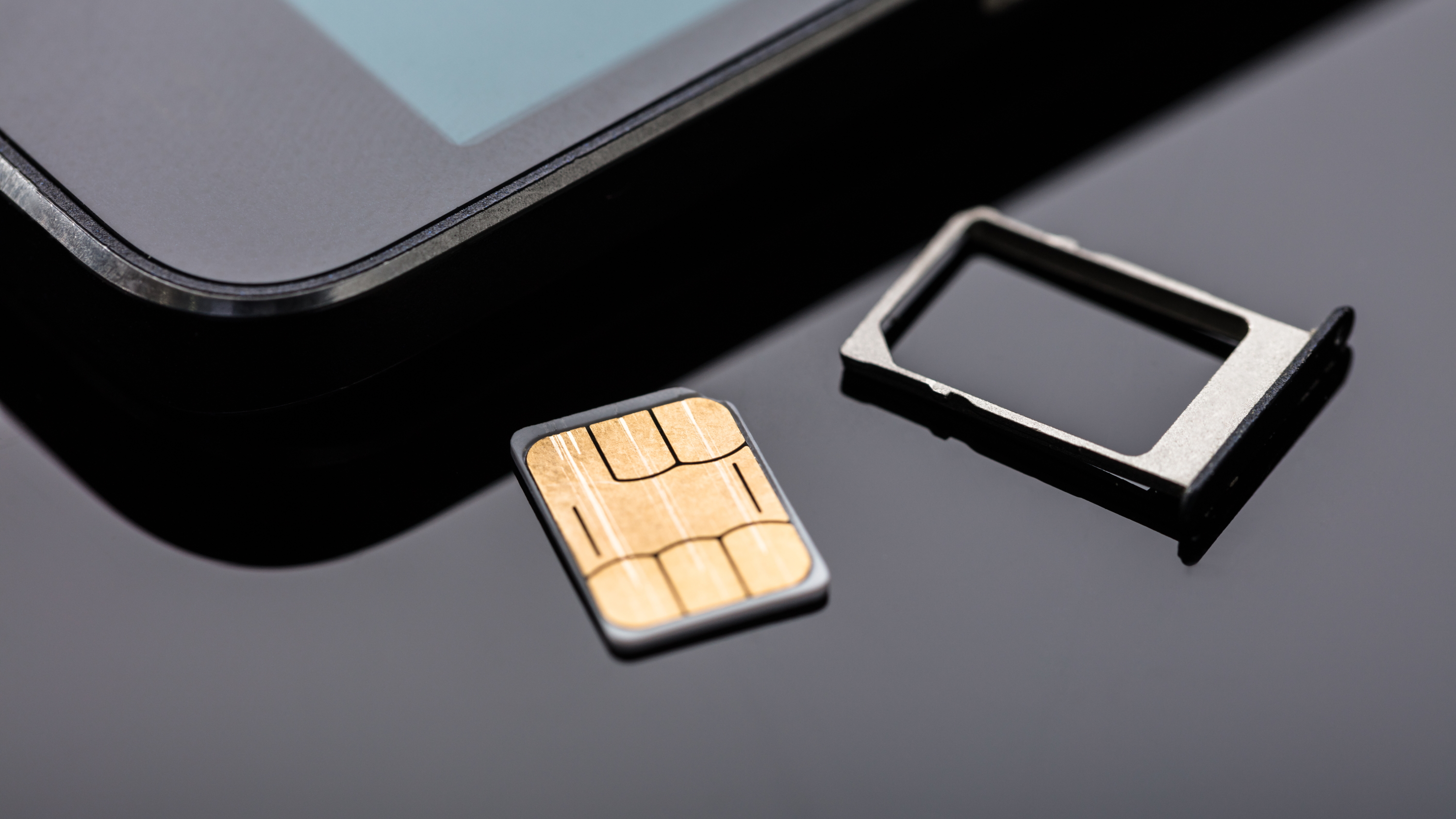
As you would expect, there is no simple answer to this and the question is more about what is the best plan for you. This will obviously depend on a wide variety of factors.
For those on a budget and looking for some flexibility, a prepaid cell phone plan will be an excellent way to go. These are often the cheapest options and the lack of contracts is going to be a massive bonus, especially if you like to change up carriers frequently.
If you frequently stream Netflix on the go, like to play games on your phone or just generally drain your data at impressive speeds, an unlimited plan is an excellent way to go — especially as 5G becomes more common.
For more on picking a plan, check out our guide on how much data you need in your cell phone plan.
Family cell phone plans are an excellent way to save money on each phone line, since many carriers drop the per-line cost for each additional line. Some carriers, such as Verizon and AT&T, let you mix and match plans, so parents can get an unlimited line with greater perks, while giving kids a cheaper line of data to save money overall.
If you are simply after the lowest price possible, carriers including Visible and Boost Mobile can offer you really low costs if you don't mind settling for fewer perks and lower caps on data (even high-speed data in the case of some unlimited plans). In some cases, you can get a lower rate by paying for a full year of service ahead of time, as is the case at Mint Mobile.
MVNOs vs other carriers
MVNOs are a slightly strange concept but they do offer an excellent way to get a cell phone plan on a budget. So what are they and how do they differ from the main carriers?
First, it's important to note the main carriers. These are: AT&T, Verizon and T-Mobile, which absorbed Sprint in 2020. Boost Mobile is trying to establish itself as another nationwide provider, building out its own network.
MVNOs (Mobile Virtual Network Operators), on the other hand, don't own and operate their own technology and instead piggyback off of the services of one of the above brands. This allows them to be far cheaper than the main carriers but does mean they are the first to be restricted during peak usage periods and don't get access to as many additional benefits.
We explain more about this in our MVNO guide, but the main players are:
- Mint Mobile runs on T-Mobile
- Metro by T-Mobile runs on T-Mobile
- Tello runs on T-Mobile
- Cricket Wireless runs on AT&T
- Visible runs on Verizon
- Xfinity Mobile runs on Verizon
Cell phone plans comparison
Get instant access to breaking news, the hottest reviews, great deals and helpful tips.
Philip Michaels is a Managing Editor at Tom's Guide. He's been covering personal technology since 1999 and was in the building when Steve Jobs showed off the iPhone for the first time. He's been evaluating smartphones since that first iPhone debuted in 2007, and he's been following phone carriers and smartphone plans since 2015. He has strong opinions about Apple, the Oakland Athletics, old movies and proper butchery techniques. Follow him at @PhilipMichaels.
